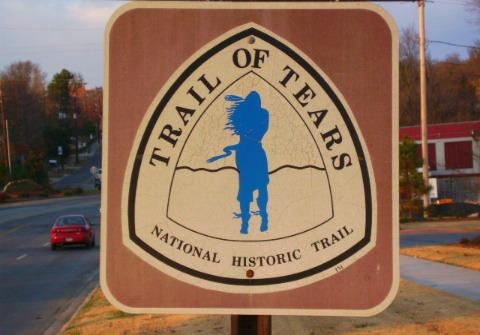
More information about one of the greatest atrocities against Native Americans has recently come to light, and the verdict is out: The 19th century Trail of Tears wrecked Cherokee health in addition to crushing their spirits. Like rings in tree stumps, skull reduction in populations can reveal hard times. And you guessed it—the massive death march forcing Cherokees and other Indian nations from their ancestral lands in the east to resettle in Oklahoma (or flee to the Smoky Mountains) was a mega hard time. President Andrew Jackson may or may not have been descending into madness from lead and mercury poisoning when he ordered the forced evacuation. Either way, the endeavor to clear land for ever-expanding white folk caused thousands of Native Americans to suffer and die from exposure, disease and starvation.
A new study by researchers from North Carolina State University and the University of Tennessee analyzed data collected by anthropologist Franz Boas in the late 19th century. As part of his (much discussed) studies on different ethnic groups, Boas took various body measurements of Native Americans, including cranial length and breadth. With the knowledge that stressful events can translate to malnutrition, the modern researchers had a hunch that Boas’ data might reveal hardship written in the bones of Native groups. So they reviewed measurements from adults living between 1783 and 1874—when shit got real for Cherokees—and found a connection between skull shape, and stressful events in their history.
Sure enough, they found that front-to-back head length shortened over the course of traumatic events, especially in the late 1830s, when the Trail of Tears occurred. If there’s a silver lining to be coaxed from this story (and there’s likely not), other recent research in epigenetics (inheritable traits developed from parents’ environment, rather than their original DNA) has found that teenagers suffering from famine can produce more robust children if the timing aligns right with critical pubescent changes in the parents’ reproductive plumbing. Maybe the researchers should tackle that potential connection next (were children of the malnourished stronger than average?), and Boas’ data will truly be the anthropological gift that keeps on giving.
Image: commons.wikimedia.org.






